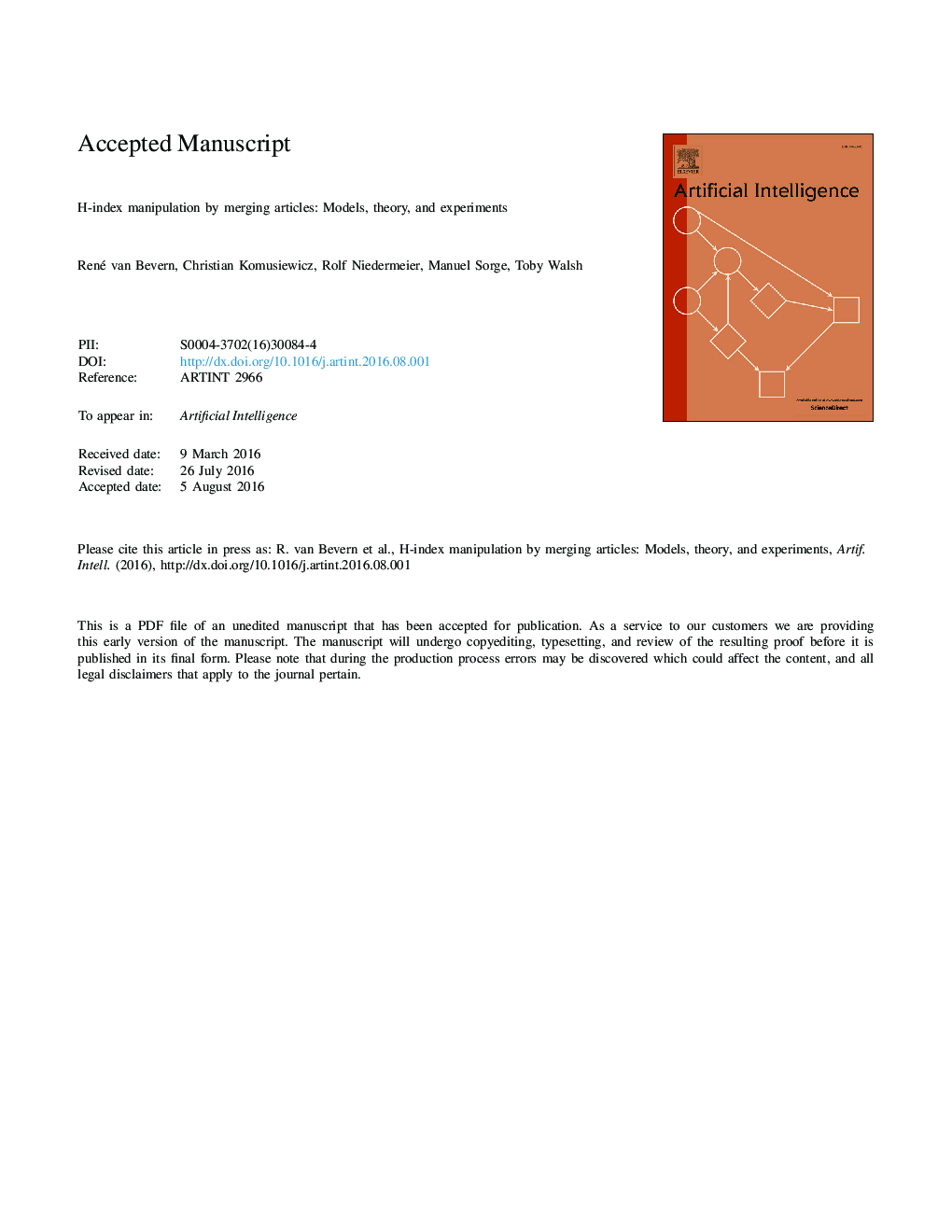| Article ID | Journal | Published Year | Pages | File Type |
|---|---|---|---|---|
| 4942168 | Artificial Intelligence | 2016 | 24 Pages |
Abstract
An author's profile on Google Scholar consists of indexed articles and associated data, such as the number of citations and the H-index. The author is allowed to merge articles; this may affect the H-index. We analyze the (parameterized) computational complexity of maximizing the H-index using article merges. Herein, to model realistic manipulation scenarios, we define a compatibility graph whose edges correspond to plausible merges. Moreover, we consider several different measures for computing the citation count of a merged article. For the measure used by Google Scholar, we give an algorithm that maximizes the H-index in linear time if the compatibility graph has constant-size connected components. In contrast, if we allow to merge arbitrary articles (that is, for compatibility graphs that are cliques), then already increasing the H-index by one is NP-hard. Experiments on Google Scholar profiles of AI researchers show that the H-index can be manipulated substantially only if one merges articles with highly dissimilar titles.
Related Topics
Physical Sciences and Engineering
Computer Science
Artificial Intelligence
Authors
René van Bevern, Christian Komusiewicz, Rolf Niedermeier, Manuel Sorge, Toby Walsh,
